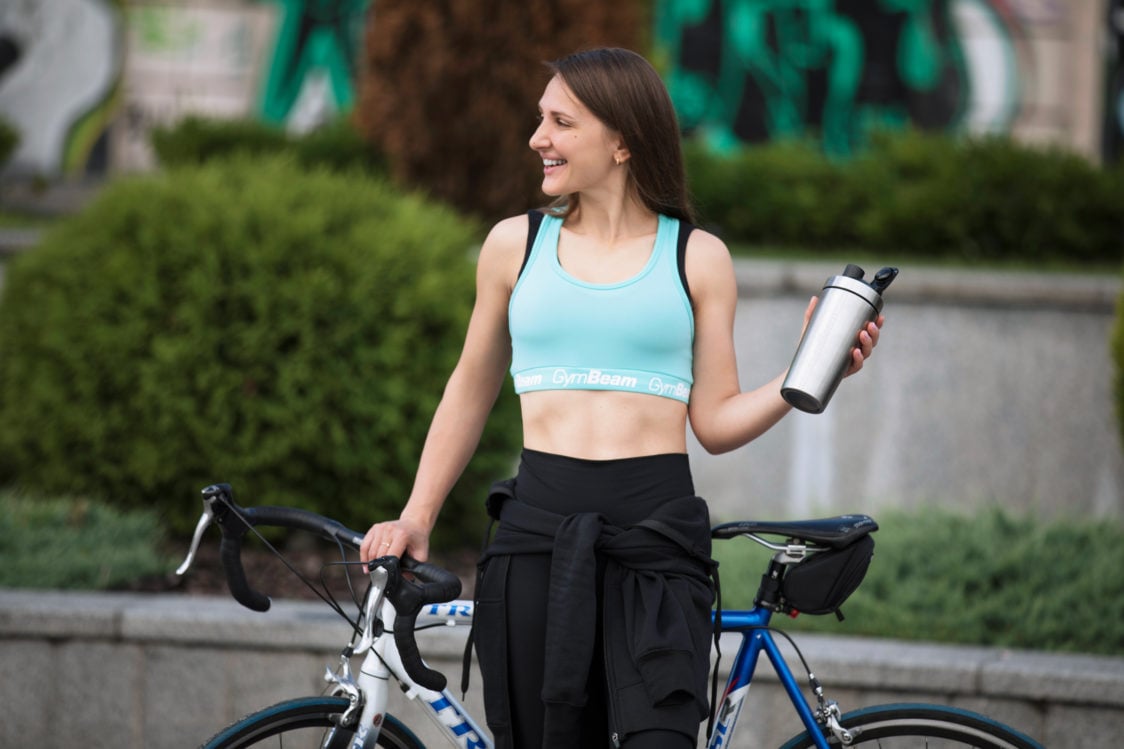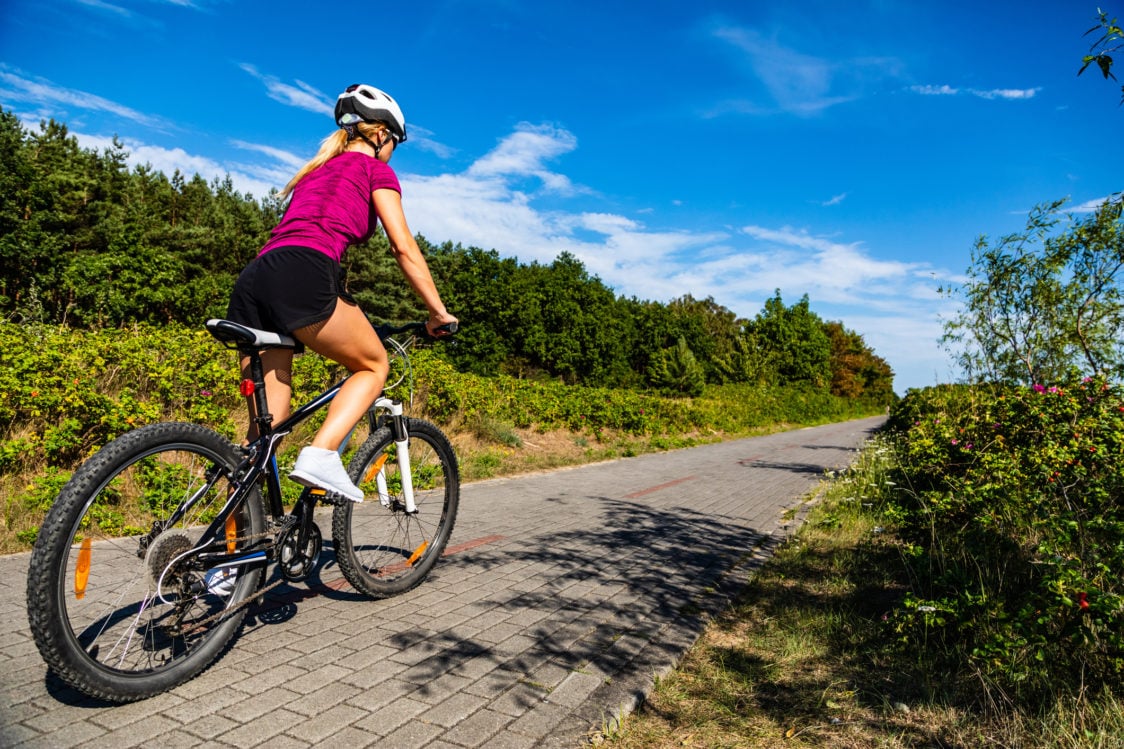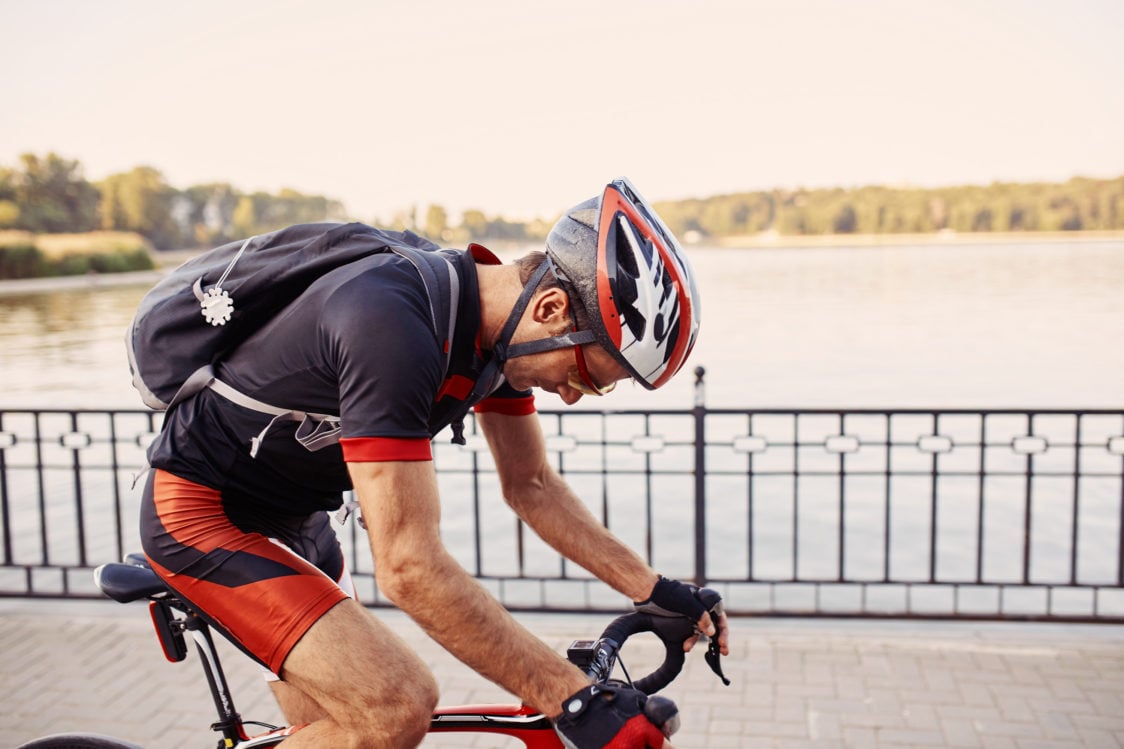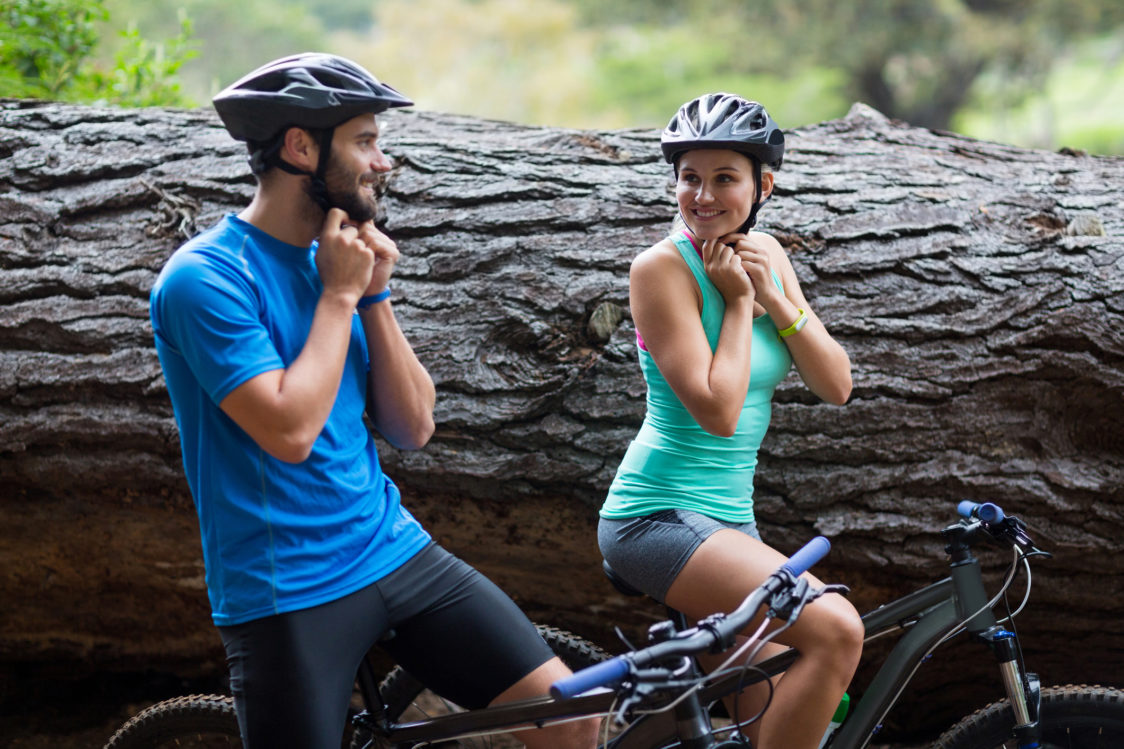Table of Contents
Are you looking forward to every afternoon when you can go cycling, or has your bike been lying dusty in the basement for years? Whatever the case, you might be wondering how much cycling can change your life for the better. If you ride a bike regularly, we can certainly assure you that you have chosen the right sport. If you’ve been hesitant to get back in the saddle for several years, we assure you there’s nothing to wait for. The view of the world from a bicycle saddle is loved by everyone.
10 reasons to go cycling
Cycling, like other sports, has many benefits that have earned it millions of followers worldwide. It doesn’t matter if you have a mountain bike, road bike or gravel bike. Cycling can take many forms, and it is up to you whether you go out into the field or on the road instead. Let’s look together at the benefits you get with any type of cycling.
1. You will lose weight more easily
To lose weight, you have to be in a calorie deficit. This means that your total intake must be less than your total output. In order to achieve this and not have to reduce your food portions too much, it is optimal to include physical activity. Cycling can be a great option.
This is a sport that, at a gentler pace, may not be physically as demanding, yet it burns a fair amount of calories. It’s quite possible that you can pedal a bike for longer periods of time than you can run, which makes the energy expended even more. To give you a better idea, we have a table in which you can find approximate values of calories burned per hour at different intensities of cycling. These figures are given for an average 65 kg female and 80 kg male. [1]
Types of cycling | 65 kg female | 80 kg male |
|---|---|---|
| Riding on a flat surface at a moderate pace (e.g. going to work) | 260 kcal | 320 kcal |
| Riding at 17 km/h | 442 kcal | 544 kcal |
| Riding at 21 km/h | 520 kcal | 640 kcal |
| Riding at 25 km/h | 650 kcal | 800 kcal |
| Riding in the mountains at a competitive pace | 1040 kcal | 1280 kcal |
| Riding at 20 km/h standing up | 585 kcal | 720 kcal |
Of course, take these values as indicative only. It makes a big difference whether you are riding on a flat or in hilly terrain. I guess you can’t expect to expend as much energy on the first ride as competitive riders. However, you might be intrigued by the amount of calories you are able to burn so painlessly by commuting to work.
If a 65 kg female rides thirty minutes by bike to work and thirty minutes home every day, she will burn 1,300 kcal in a week. In less than six weeks, that’s the amount of energy hidden in one kilogram of fat. Who wouldn’t want to lose weight just by making such a simple change, right? In addition to your figure, your wallet will thank you for saving money on petrol, or bus or train tickets.
In the case losing weight is not your goal, remember to replenish the energy burned on the bike from quality sources. For example, FueGain gainer or a high-quality diet can help.

2. You will tone your legs and buttocks
Have you ever tried to ride a long and steep hill with maximum effort and ideally standing up? If so, you must know what it feels like to have burning thighs in the same way that you’ve just done a set of heavy squats. And that’s bound to show on your figure. We are not saying that cycling will replace legs workout. It can, however, help to make your thighs, calves and buttocks firmer at first glance. Women will be pleased to know that it even helps to reduce cellulite in these areas. [2]
Given that your legs get a full workout during an intense ride, we wouldn’t recommend planning a long cycle after training. For a pleasant day could easily become an ordeal, and the next day walking up the stairs would hurt terribly. If you’re looking for other ways to work your butt off without attending the gym, you shouldn’t miss the article Get a Firm and Round Butt Without a Barbell. Try Resistance Band Workout.
3. You will improve your physique
Beginners may feel that they are on edge after riding for an hour. That’s totally fine, and believe me, it’s going to get better. In a few weeks, the hill where your lungs used to burn will now be bearable and possibly boring. You will also be able to take a longer route. As you gradually build up your physique, your body will learn to use fat more as a fuel under aerobic load. This will allow you to conserve your muscle glycogen more, increasing the amount of time you are able to cycle without running out of ‘juice’. Just because you use fat more as fuel doesn’t mean you’ll lose more weight. The aforementioned calorie deficit still plays a key role.
You might be interested in these products:
4. You will improve your health
Regular sports will not only positively affect your appearance, but also your health. It is therefore recommended by the World Health Organisation to have a minimum of 150 minutes of moderate-intensity activity or 75 minutes of high-intensity activity each week. This is really the absolute minimum that everyone should keep. With keeping these active minutes, cycling can be a great help. Go for a shorter cycle ride several times a week after work, or choose a longer route at the weekend, and you’re done. [8]
Regular cycling has a positive effect on our cardiovascular system, for example. It helps to lower blood pressure and the risk of heart attacks. It may also help with lowering the level of so-called bad LDL cholesterol and, in turn, increase the level of good HDL cholesterol. But it also serves to prevent cancers (such as colon), type 2 diabetes and other diseases that are typically associated with being overweight or obese. It can also have a positive effect on our digestion, immunity or psyche by helping to reduce depression and improve mood. [3-5]
If any of these problems are already troubling you, cycling is a great way to start fighting them. Since you sit during it most of the time and don’t carry the weight of your whole body, it’s joint-friendly. Therefore, it is often recommended for people who have extra pounds or are recovering from a knee injury or surgery. In such a case, it can also be great for rehabilitation. [6]

5. You can customise the load
Cycling has the advantage that practically anyone can do it. On bicycles, you can see both the smallest of children and the even elderly using it as a means of transport. The main advantage is that everyone can adjust the load according to themselves.
When compared to a run, for example, it can be difficult for many people to run even at a moderate pace in the beginning. It shouldn’t be a problem with cycling. If you choose a flat terrain, you can stop pedalling completely at times. This allows you to rest and build up your strength for the next few kilometres. Those who feel that cycling is not in their power after all can help themselves to an electric bike as needed.
6. You have an eco-friendly means of transport
Any idea how much money you spend on petrol? If not, then let’s count together. If you drive 15 km to work every day and have a car with an average consumption of 6 L per 100 km, you will use around 78 € per month. Not to mention the amount you save on parking and servicing.
Don’t worry, nobody’s asking you to give up your car or public transportation right away. However, at least in the summer, try to interchange it for a bicycle once in a while, saving your wallet and our planet. To be more motivated, calculate how much money a particular trip costs you. If you choose to ride a bike, set that amount aside. You can save efficiently for, say, shoes or a handbag or whatever else you’ve been denying yourself for a long time.
Furthermore, you may also be motivated by a challenge with your partner – who drives fewer kilometres, does the weekend cleaning and cooks lunch. You can then track each other’s activities with apps. The idea of losing and doing the housework will surely drive you forward. In case you use the bike as a means of transport, do not forget the safety features. And if you don’t venture into traffic yourself, you’d better stay off the roads and give preference to bike paths so you don’t put yourself or others at risk.

7. You will explore your surroundings
You probably have some idea what’s in the vicinity of your home. Do you know the area ten or twenty kilometres away well? So get on your bike and go explore. I’m sure you don’t normally go this far and probably have no idea what’s there. Maybe you’ll find great places for a picnic or a hidden café where you can freshen up on the way. This way you can also practice your sense of direction. Keep an eye on the distance travelled, though. You don’t want to get into a situation where you’re on edge, and you’ve got twenty kilometres to get home.
8. Your psyche will improve
As we’ve already said in the health section, exercise can help with reducing depression, anxiety or stress. Moreover, it can also improve mood and increase the level of psychological well-being felt. [11-12]
Moreover, cycling also functions as a form of mental hygiene. If you’re full of problems you can’t get out of your head, get on your bike and at least take a shorter ride. You’ll see that when you pedal up a steep hill, all your worries will pass you by, and you’ll concentrate only on climbing it. Your reward will be a good mood thanks to a flood of endorphins and a clear head with no worries. [7]

9. You will sleep better
Cycling, like other sports, also has a positive effect on sleep. You can see this benefit if you include at least thirty minutes of aerobic activity per day. People who play sports regularly tend to have a better quality sleep, fall asleep more easily, and also feel more rested in the morning. Ultimately, this can help them to produce better sporting results the next day. If you have trouble falling asleep, sport can be a great way to get rid of them altogether. However, try to stop the more intense activities no later than three hours before bedtime, otherwise the effect on sleep could be reversed. [9-10]
If sport won’t help you, and you’ll still be staring at the ceiling for hours, you can try supplements to help you sleep or try the advice from the article How To Fall Asleep Quickly? Try Simple Tips For A Better Sleep.
10. You get a new ‘toy’ that you can improve on
This point is more likely to be appreciated by gentlemen, especially those who are able to spend hours in the workshop upgrading cars, motorbikes or any other machinery. With a bike, you get another thing that you can work on gradually.
Why don’t we try higher quality tangled wheels, hubs, better foot pedals or gears? You’ll see there’s still a ton to be had. And the joy of riding a bike you’ve created yourself will be greater. But before you go into adjustments, study the information you need to avoid doing more harm than good. More experienced riders in different bike groups can help you.

What should you remember?
In today’s article, we summarized several reasons why it pays to ride a bike. Perhaps we will draw those in who are hesitant to cycle. A vision of better health, a slimmer body, better mood, and cheap transport must entice just about anyone. Whether you go for a short ride or take a longer route, always think about your safety and don’t forget your helmet and reflective elements.
And if cycling still doesn’t appeal to you, that’s fine. There are many other sports you can pursue. The important thing is that they keep you entertained and fulfil you. That’s the only way you will stick at them in the long term.
Do you ride a bike regularly, or does the thought of cycling uphill repel you? Share your opinion with us, and if you liked the article, don’t forget to share it among your friends. Maybe you’ll find new cycling partners.
[1] Compendium of physical activities – https://sites.google.com/site/compendiumofphysicalactivities/Activity-Categories/winter-activtities
[2] CELLULITE TREATMENTS: WHAT REALLY WORKS? – https://www.aad.org/public/cosmetic/fat-removal/cellulite-treatments-what-really-works
[3] B. De Geus , E. Van Hoof , I. Aerts , R. Meeusen – Cycling to work: influence on indexes of health in untrained men and women in Flanders. Coronary heart disease and quality of life – https://onlinelibrary.wiley.com/doi/full/10.1111/j.1600-0838.2007.00729.x?casa_token=3JaiepoG4qwAAAAA%3A-5sXXnn1KEkRwI3NFuZId6r3FjbUwYKlMi5MwaffGY-7-6hgRiw7xwJilZh-aN5rPVtisn2qluHhnDE
[4] Steven Mann et al. – Differential Effects of Aerobic Exercise, Resistance Training and Combined Exercise Modalities on Cholesterol and the Lipid Profile: Review, Synthesis and Recommendations – https://www.ncbi.nlm.nih.gov/pmc/articles/PMC3906547/
[5] P. Oja et al. – Health benefits of cycling: a systematic review – https://onlinelibrary.wiley.com/doi/full/10.1111/j.1600-0838.2011.01299.x?casa_token=twE-zLkY6TUAAAAA%3AE5aydDyLNMbMnR_947C-6dRIioSkBm6Q5vZ2H7YUBst8uBsu8sHuGVN2p4OCwznXmiFNhyVaxEhsMNg
[6] William D. McLeod et al. – Biomechanics of knee rehabilitation with cycling – https://journals.sagepub.com/doi/abs/10.1177/036354658000800306
[7] Ione Avila-Palencia et al. – The relationship between bicycle commuting and perceived stress: a cross-sectional study – https://bmjopen.bmj.com/content/7/6/e013542.abstract
[8] Centers for disease control and prevention Atlanta – Physical Activity for a Healthy Weight – https://www.cdc.gov/healthyweight/physical_activity/index.html
[9] Christopher E. Kline – The bidirectional relationship between exercise and sleep: Implications for exercise adherence and sleep improvement – https://www.ncbi.nlm.nih.gov/pmc/articles/PMC4341978/
[10] National Sleep Foundation – 2013 Sleep in America® – https://www.sleepfoundation.org/wp-content/uploads/2018/10/RPT336-Summary-of-Findings-02-20-2013.pdf?x16972
[11] Christer Malm et al. – Physical Activity and Sports—Real Health Benefits: A Review with Insight into the Public Health of Sweden – https://www.mdpi.com/2075-4663/7/5/127
[12] Molly E Mieras et al. – Physiological and psychological responses to outdoor vs. laboratory cycling – https://pubmed.ncbi.nlm.nih.gov/24476776/


Add a comment